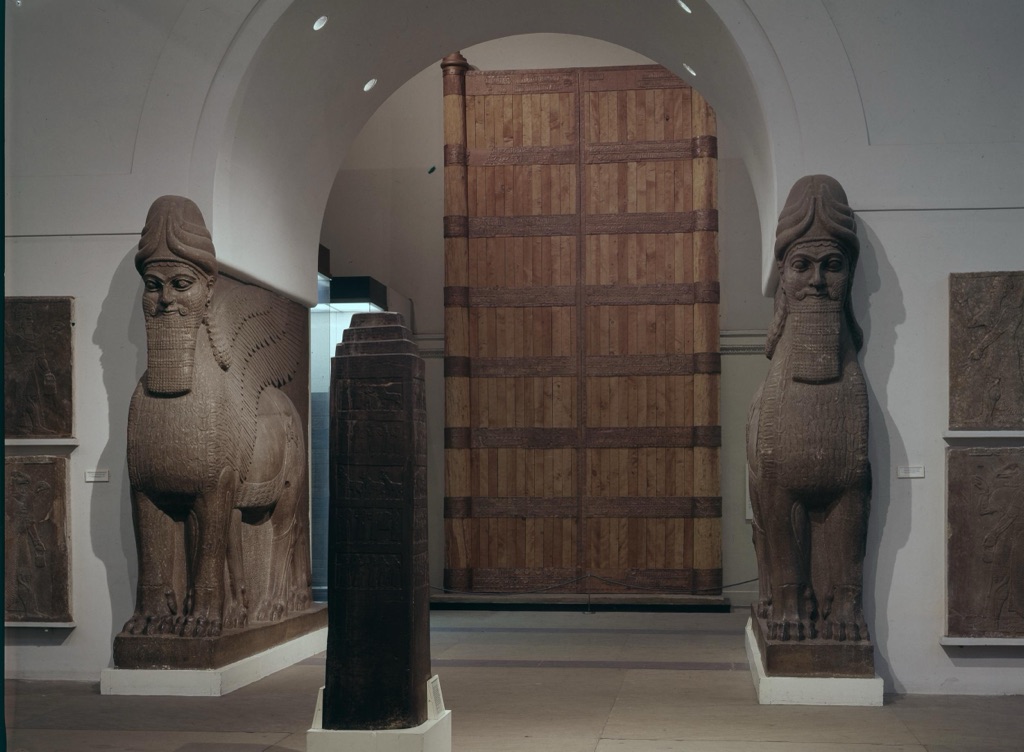The Black Obelisk of Shalmaneser III is a significant artifact from ancient Mesopotamia. It is a black limestone Assyrian sculpture with reliefs that depict the military campaigns and tribute bearers of King Shalmaneser III. This piece stands as a testament to the Assyrian king’s power and the empire’s interactions with neighboring regions. The obelisk contains detailed inscriptions and is one of the most complete Assyrian reliefs, providing valuable insights into the political and social dynamics of the 9th century BC.
Get your dose of History via Email
Historical Background of the Black Obelisk of Shalmaneser III
The Black Obelisk of Shalmaneser III was created during the reign of its namesake, who ruled from 858 to 824 BC. It was discovered in 1846 by archaeologist Austen Henry Layard in the ancient city of Kalhu, the modern Nimrud in northern Iraq. This city was once a capital of the Assyrian Empire. The obelisk is a product of the Neo-Assyrian period, a time when the empire was at its zenith.
Shalmaneser III was a formidable ruler who led numerous military campaigns to expand his territory. The obelisk was erected as a public monument in the central square of Kalhu. It served as a record of the king’s conquests and the tribute paid by subjugated kingdoms. The artifact has since become a key source of historical information about the Assyrian Empire and its relations with other cultures.
After its discovery, the obelisk was transported to the British Museum in London, where it remains on display. It is one of the most prized pieces of Assyrian art due to its excellent preservation and the wealth of historical data it provides. The obelisk has not only survived the passage of time but also the tumultuous history of the region, including recent conflicts.
While the obelisk itself was not the scene of historical events, the narratives it depicts are crucial for understanding the era. The reliefs show the submission of foreign leaders to Shalmaneser III, including the biblical Jehu, king of Israel. This makes the obelisk an important artifact for both historians and biblical scholars.
The Black Obelisk stands as a silent witness to the power and influence of the Assyrian Empire. It offers a glimpse into the lives of the people and the workings of diplomacy and warfare in the ancient Near East. Its discovery has greatly contributed to our understanding of Assyrian art, culture, and history.
About the Black Obelisk of Shalmaneser III
The Black Obelisk of Shalmaneser III is a monolith carved from fine-grained black limestone. It stands approximately six feet tall and is decorated with twenty reliefs, five on each side. These panels depict various scenes of tribute bearers from different lands bringing gifts to the Assyrian king.
The craftsmanship of the obelisk is remarkable, with intricate details that capture the attire, gestures, and items of tribute with precision. The reliefs are accompanied by cuneiform inscriptions that identify the figures and describe the events. These inscriptions are invaluable for understanding the political relationships of the time.
The obelisk’s construction method reflects the advanced skills of Assyrian artisans. They used iron tools to carve the limestone, a technique that was innovative for the period. The reliefs are organized in registers, a common feature in Mesopotamian art, which allows for a narrative to unfold across the sculpture’s surface.
Architectural highlights of the obelisk include its tapered shape and the detailed portrayal of animals, plants, and textiles. These elements not only serve an aesthetic purpose but also provide insights into the natural environment and material culture of the Assyrian Empire.
The Black Obelisk is a masterpiece of ancient art and a testament to the sophistication of Assyrian society. Its preservation allows modern audiences to appreciate the artistic and historical significance of this ancient civilization.
Theories and Interpretations
Several theories and interpretations surround the Black Obelisk of Shalmaneser III. Scholars have debated its purpose, with some suggesting it was a political statement of power and others viewing it as a religious artifact.
The obelisk’s use as a historical record is clear, but its placement in a public square suggests it also had a propagandistic role. It would have been a daily reminder to the Assyrian people and foreign visitors of the king’s might and the empire’s dominance.
Mysteries about the obelisk include the extent of its influence on contemporary and subsequent cultures. Some historians speculate that it may have inspired similar monuments in other civilizations. The obelisk also raises questions about the nature of the tributes depicted and the relationships between the Assyrian Empire and its vassal states.
Interpretations of the cuneiform inscriptions have been matched to historical records, confirming the accuracy of the obelisk’s narratives. Dating of the artifact has been carried out using historical cross-referencing, as the reign of Shalmaneser III is well-documented.
The Black Obelisk continues to be a subject of study for its artistic value and historical content. It remains a crucial piece for understanding the Assyrian Empire and its interactions with the wider ancient world.
At a glance
- Country: Iraq
- Civilization: Neo-Assyrian Empire
- Age: 9th century BC
Conclusion and Sources
- Wikipedia – https://en.wikipedia.org/wiki/Black_Obelisk_of_Shalmaneser_III
- The British Museum – https://www.britishmuseum.org/collection/object/W_1848-1104-1

